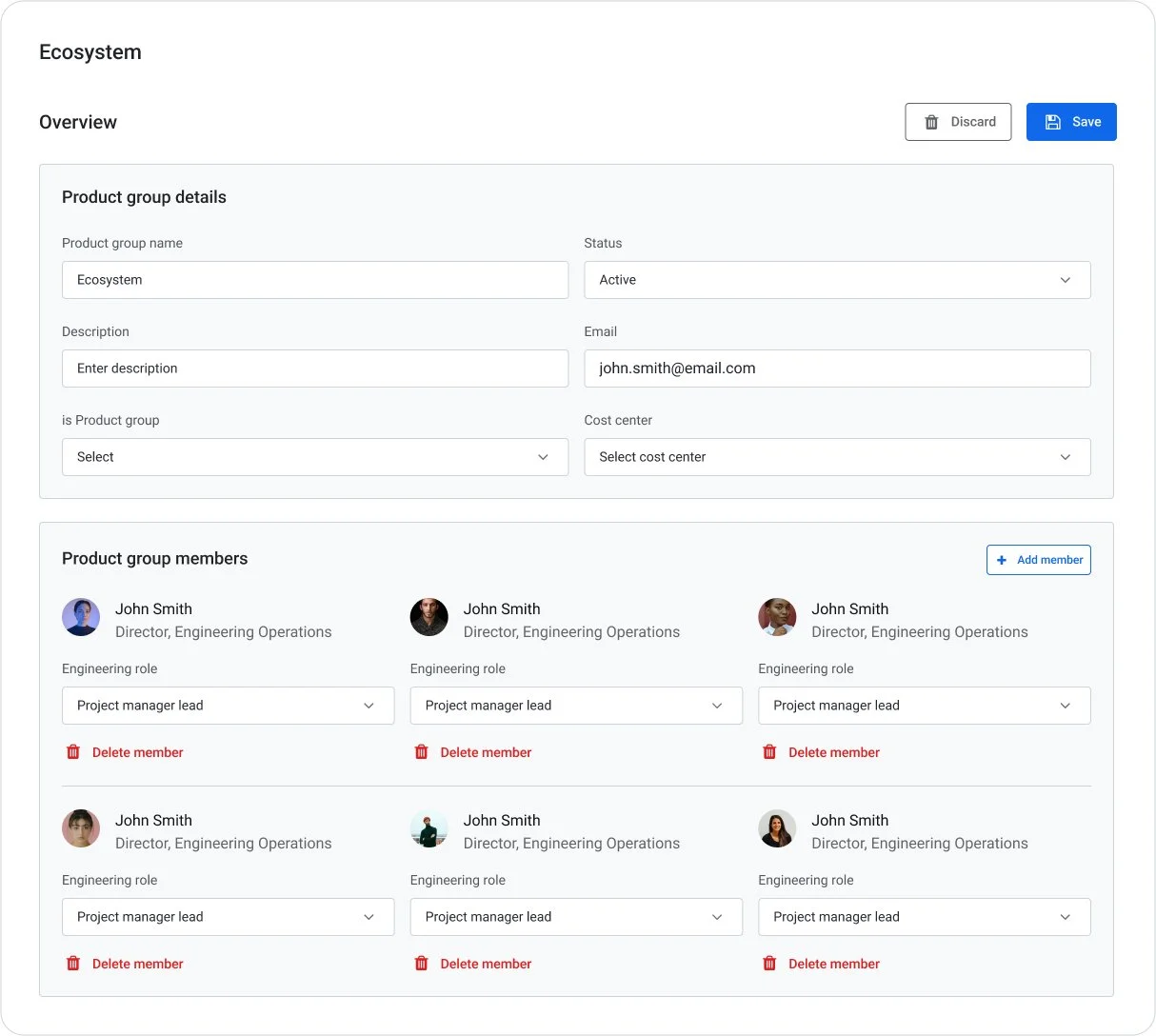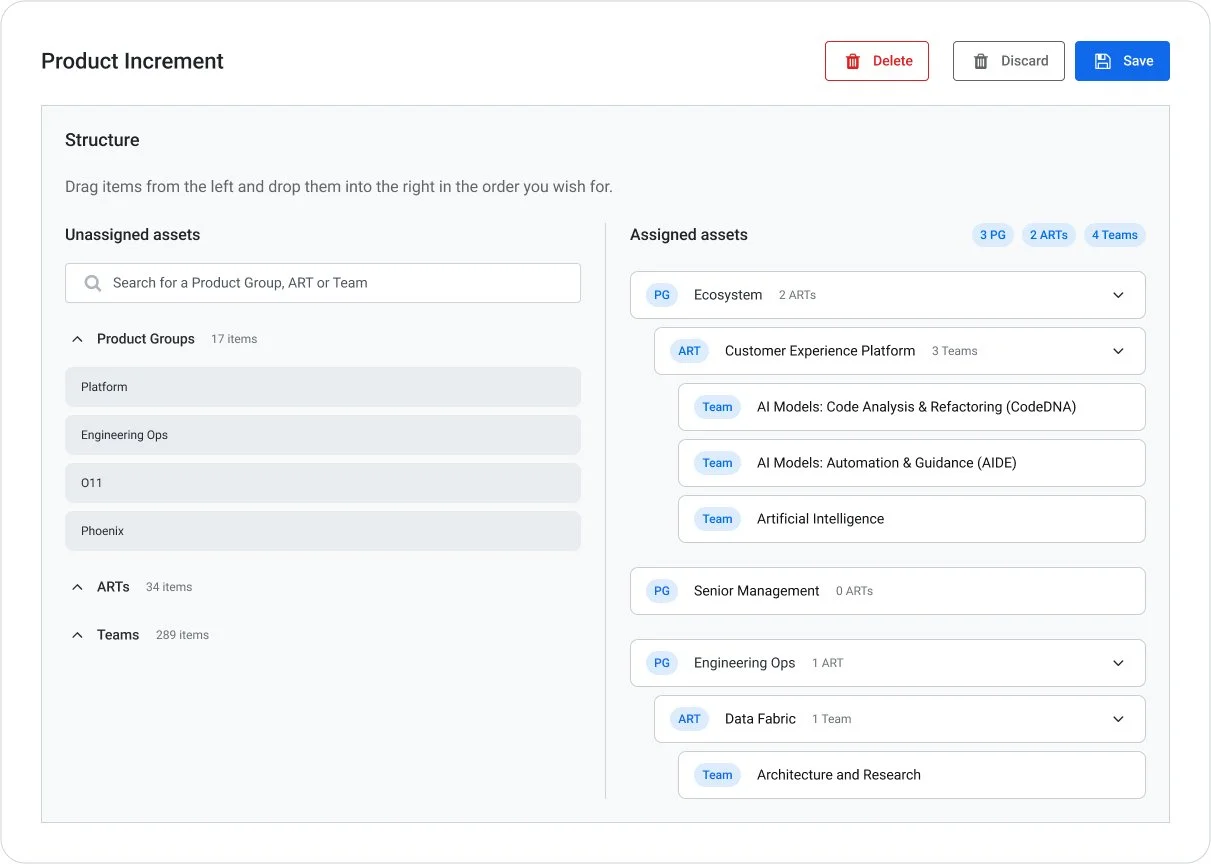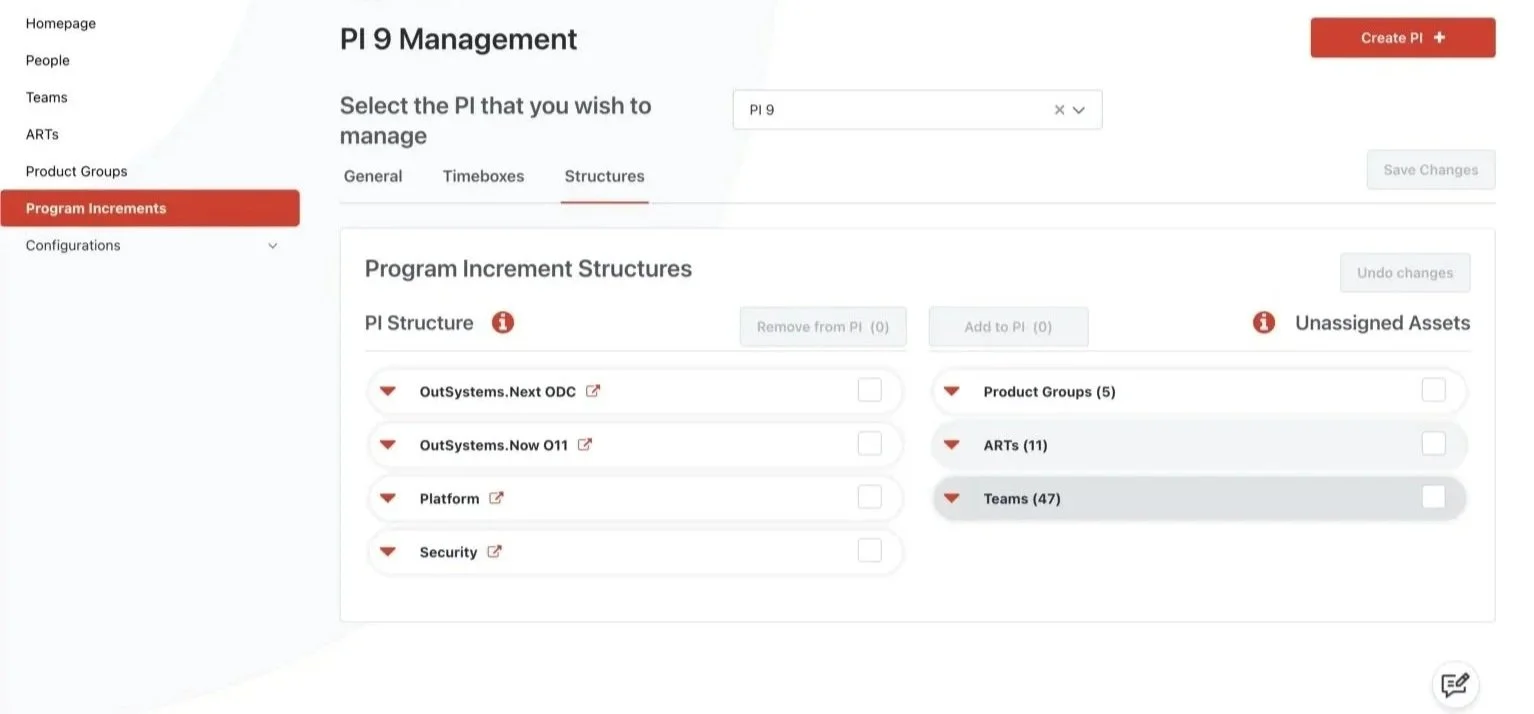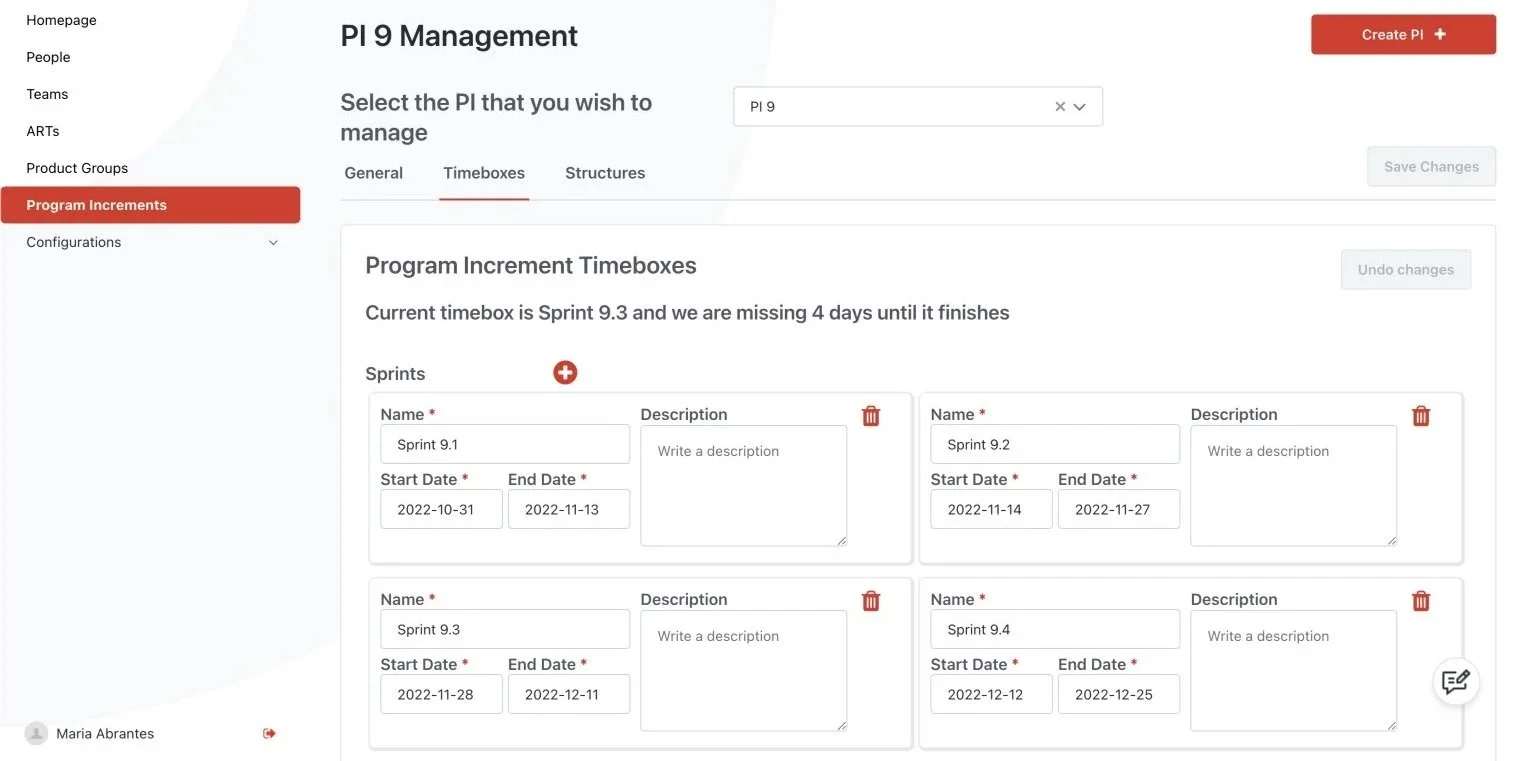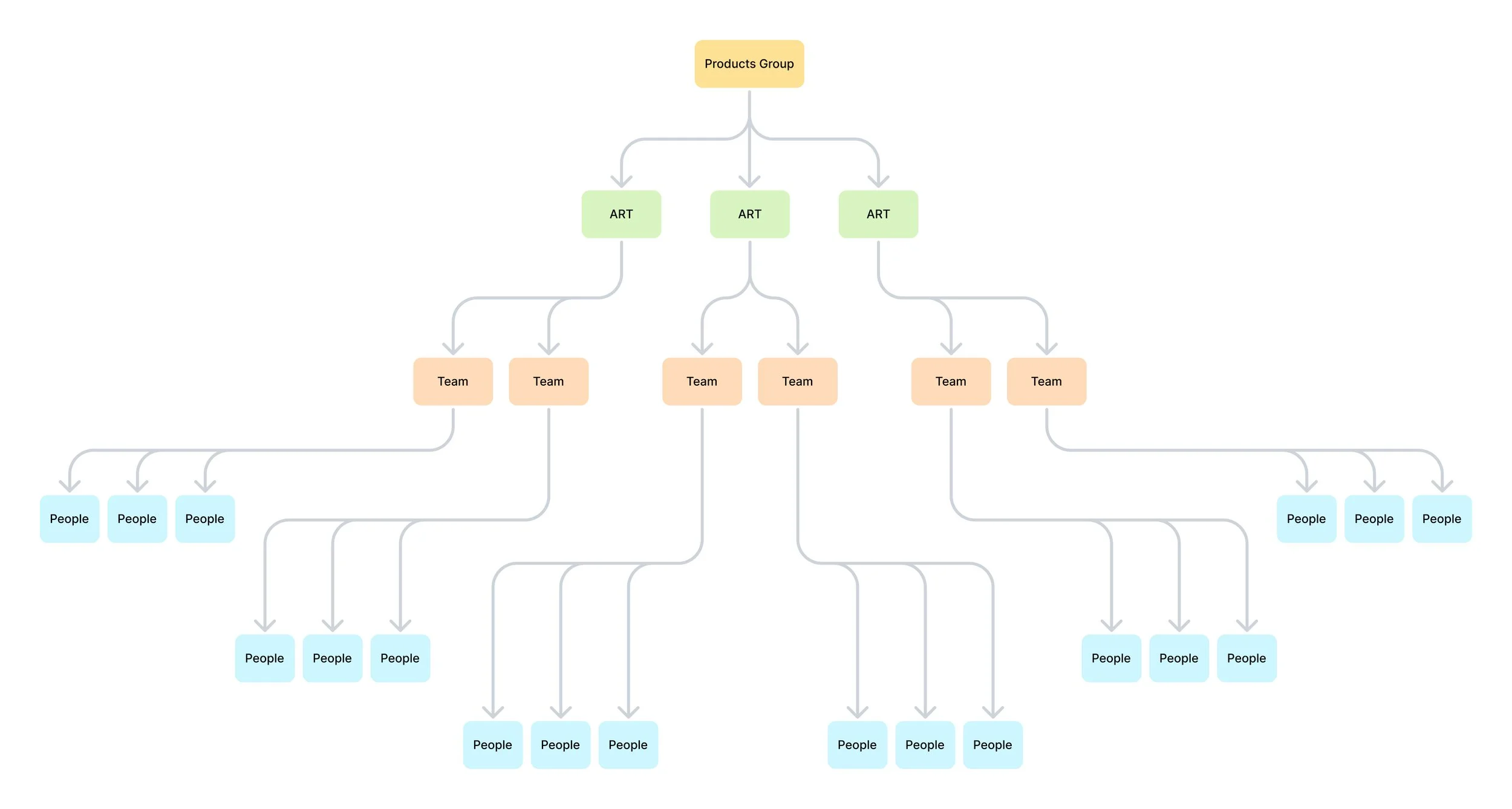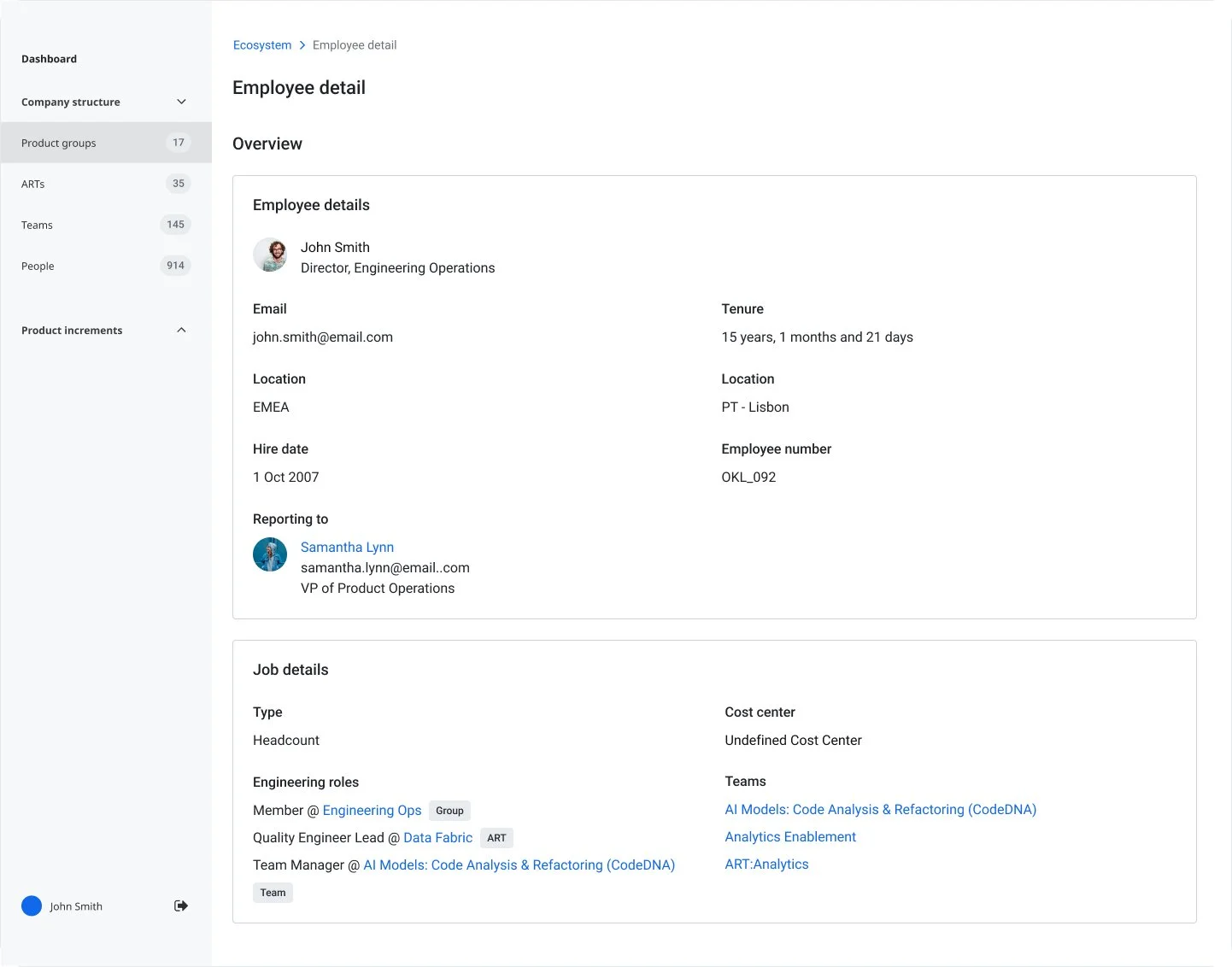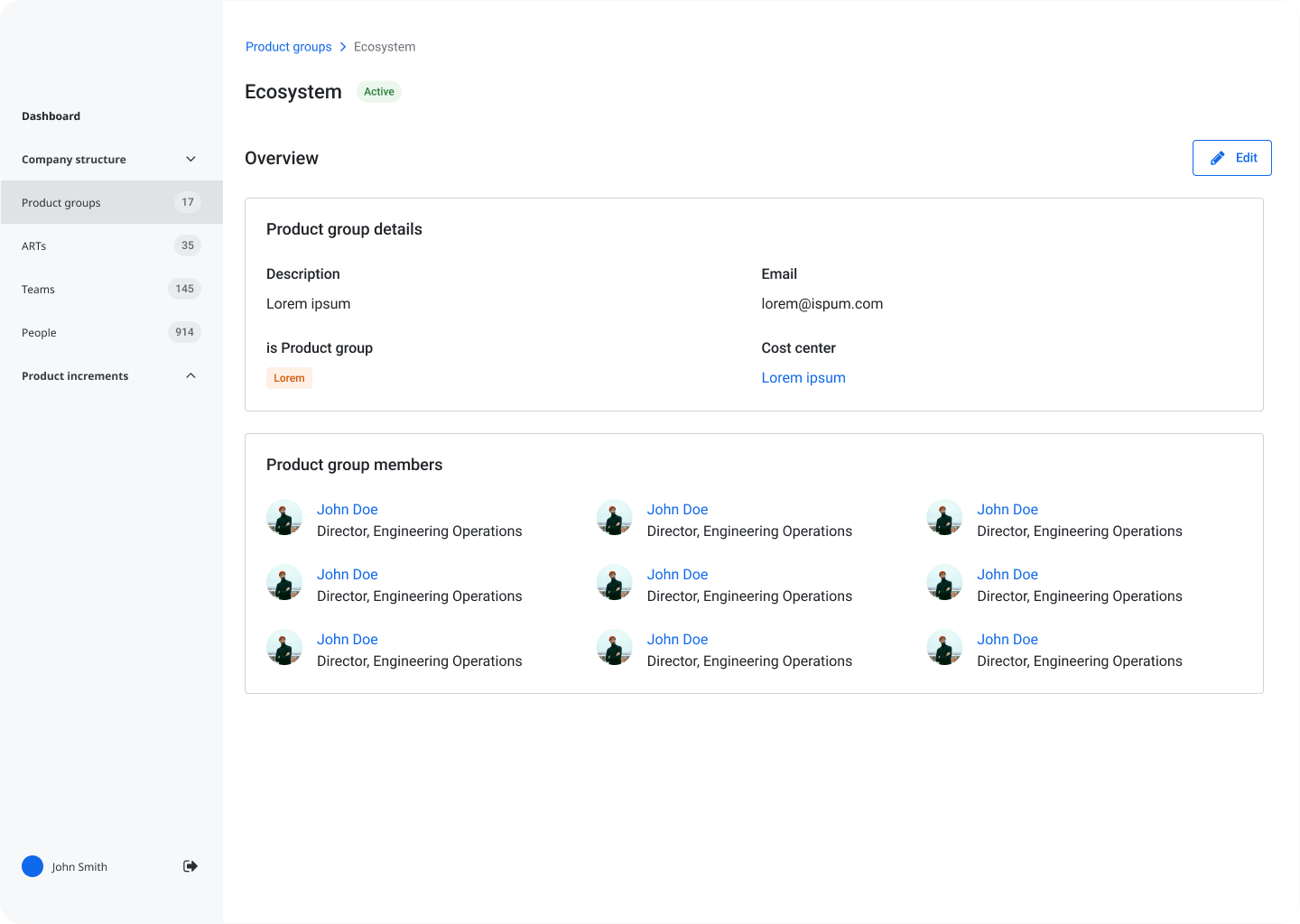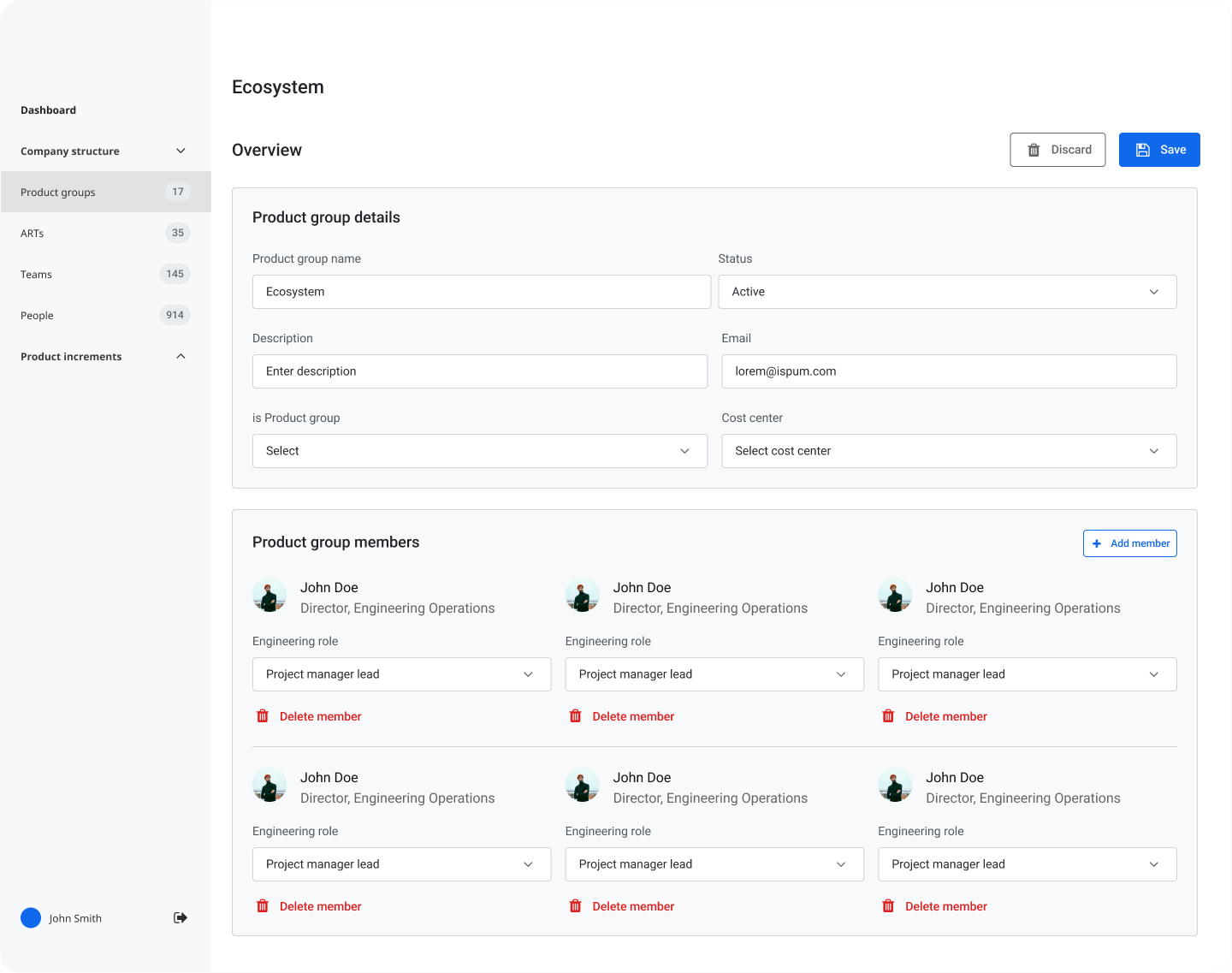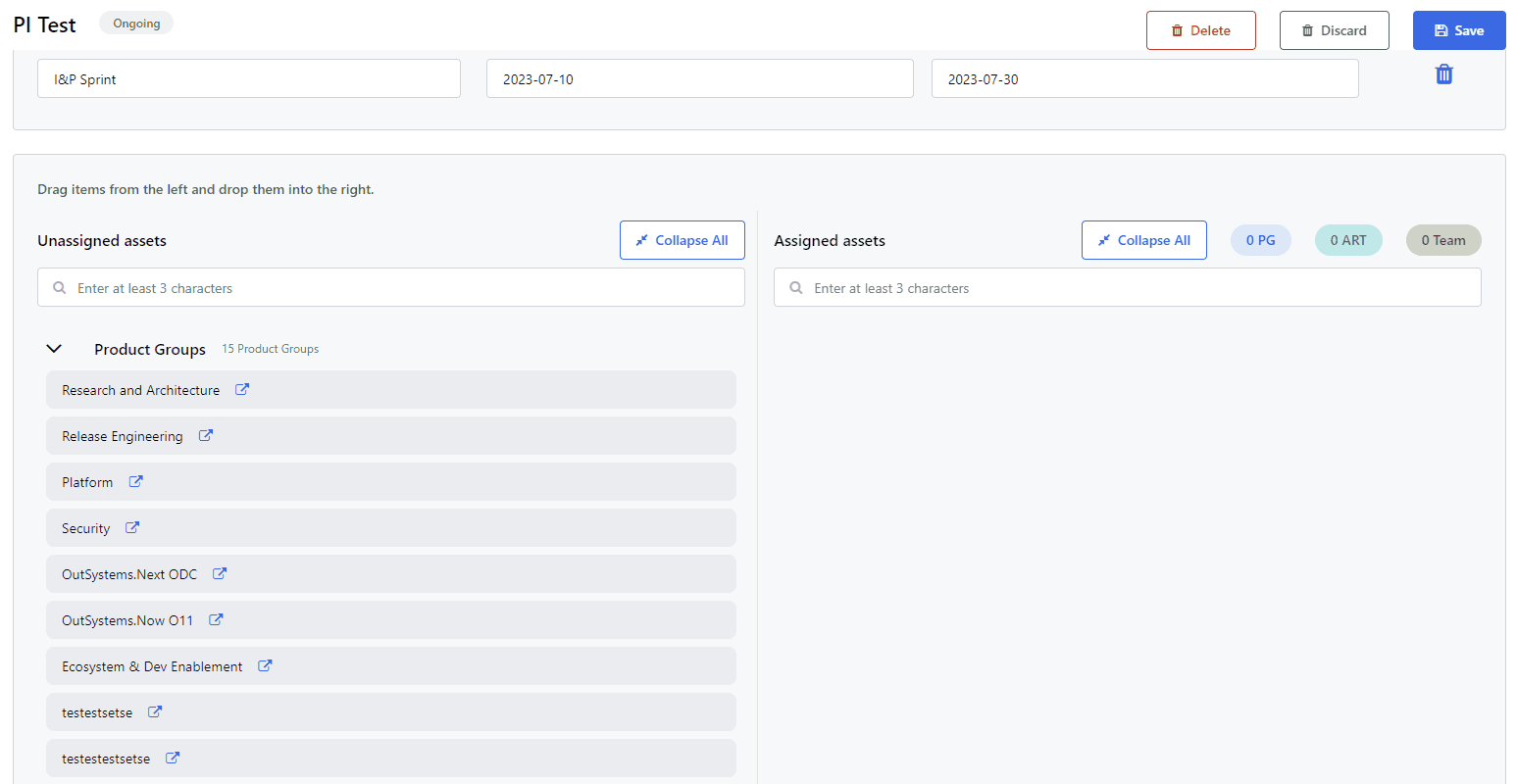Internal Directory Revamp - SaaS
Cleaner Architecture, Easier Navigation, Better Adoption
Role
Working alongside the Internal Dev Team, leading the product and user research, mapping the most important use cases and defining the project’s scope, as well as providing a final solution design.
Goal
Improve the Internal Directory App to accommodate a better user experience with less friction and optimised resources.
December 2022 - March 2023
Timeline
Leading low-code development software platform, Rev >$500M
Company
Internal Apps team, composed by PMs, Software Devs, and Data analysts.
Team
Figma, Miro, Atlassian, Google Workspace, internal tools
Tools
The Engineering Organisation Management (EOM) tool is an internal application developed for managing and structuring the Engineering Department, as well as building the current and future Product Increments.
Discovery and Ideation
Gathering context, data and defining a scope and roadmap
The application had been facing numerous issues, frequently reported by its users.
The app's complex and dense hierarchy, coupled with outdated designs, had resulted in a lack of findability and difficult user journeys.
Main pain points
One of the core challenges with this application was that it had been developed rapidly, without the benefit of targeted research or user data.
The product evolved in an ad-hoc manner, assembled piece by piece, and was eventually released as a complete system.
Given the nature of the app, the primary focus should be on organising its architecture and data clusters, as well as simplifying the most crucial user flows.
Research
User Interviews
In order to gather insights of their current experience with the app, their usual workflows and main use cases, I performed interviews which allowed me map out their main needs and pain points within the current platform.
User Testing
To have a more objective frame of the issues at hand, I shadowed the users in their day-to-day tasks (in and out of the platform) to gain insights into their internal processes, work procedures, and any possible blind spots that may not have been identified before.
Key user flows within the platform included adding, editing, and removing team members, as well as creating and managing the structure of PIs.
One of the main issues identified was the platform's dense and impractical information architecture, which made navigation difficult.
This issue extended itself beyond the navigation UI patterns (side menu, breadcrumbs, etc) but also to the navigation experience itself (especially focusing on the reverse navigation - hierarchical and chronological).
To solve this, the first thing to do was to establish the information architecture of the platform and the hierarchical clusters.
Another pain point encountered was the dissonance of page layout between add, view, and editing modes. This gap in the experience caused some confusion to the user when editing content.
Additionally, the “auto-save” feature added even more friction to the experience because of the lack of system feedback upon the applied changes.
By implementing a closed editing system, users are only able to apply changes once they click "Save", resulting in receiving a system notification and making sure their work is kept.
PI manager
The revamp of the PI manager was one of the biggest challenges.
I focused on a drag-and-drop system so the user has visibility of the entities on both sides - assigned and unassigned assets - at all times for better management control, as well as search inputs on both sides to make selection faster.
“I can safely say that Maria has been a great asset in all the work fronts that we requested from her. Without any previous knowledge about the work she would have in hands, she dived right into the application.
From the small number of meetings we had she was able to quickly grasp the use cases we were covering as well as the limitations we were facing. Not only that, but she challenged our approach to some scenarios that otherwise we wouldn't have questioned. To have the capability of quickly assessing the situation and gather information from it is a skill that complements her work greatly. (…)”
— Rui Almeida, R&D Tech Lead
